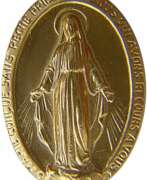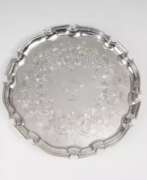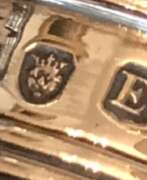Silversmiths 18th century


Pierre Platel was a Huguenot silversmith, born c. 1664 in Lille and arriving in England in 1688. He was endowed in 1697, and in 1699 was granted his freedom by ransom, after which he was recorded as a major labourer. Paul de Lamery was taken on as his apprentice in 1703 and remained there until 1713. The paymaster died in 1719. His most significant works belong to the Bentinck or Cavendish families.


Philip Rundell was a highly prosperous English jeweller, fine jewellery retailer and master jewellery makers' business proprietor, known for his association with royalty. With John Bridge, he ran and co-owned Rundell and Bridge, a firm with widespread interests in the jewellery and precious metal trades.


Paul Storr was an English goldsmith and silversmith working in the Neoclassical and other styles during the late 18th and early 19th centuries. His works range from simple tableware to magnificent sculptural pieces made for royalty.


Adrien Vachette was a French jeweler of the 18th and 19th centuries, best known as the creator of the so-called Wonderful Medallion.
Vachette was one of the most famous and prolific craftsmen of his generation. He was appointed court jeweler and supplier to the court of King Louis XVIII. Gold, tortoise shell, enamel, precious stones and ornamental stones were used extensively in the creations of Vachette, particularly in the many precious snuffboxes that were in fashion at the time.
However, he became famous at a very advanced age, when he was almost 80 years old. Paris at the time was experiencing a cholera epidemic and a period of political instability. The Archbishop of Paris, Iasent-Louis de Quelan, had the idea of solving these problems by a miracle. At his behest, Vachette designed a "miraculous medallion" depicting Our Lady. Between 1832 and 1836, more than two million copies were distributed. At the same time, Archbishop Kaelan and his clergy were active in the fight against cholera. All in all, this contributed to the growth of religiosity and respect for the church in France, and the marvelous medallions of Vachette's design continue to be minted and distributed in many Western countries to this day.





























































































































